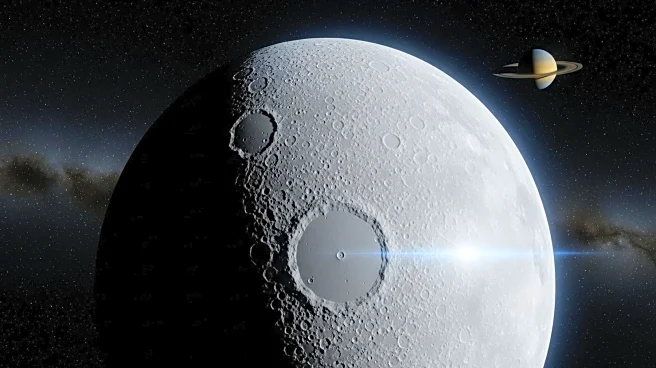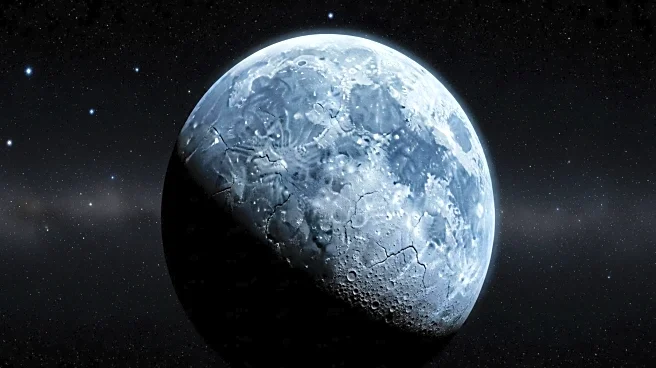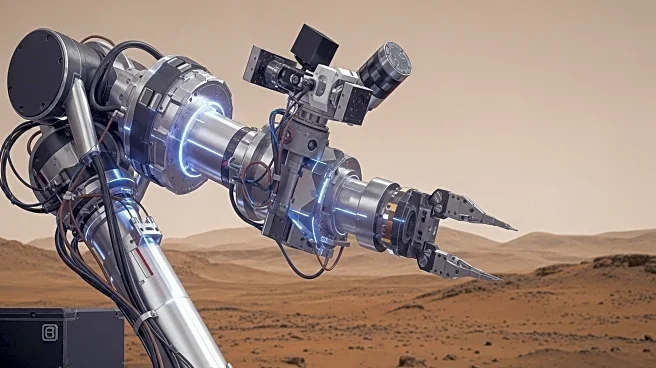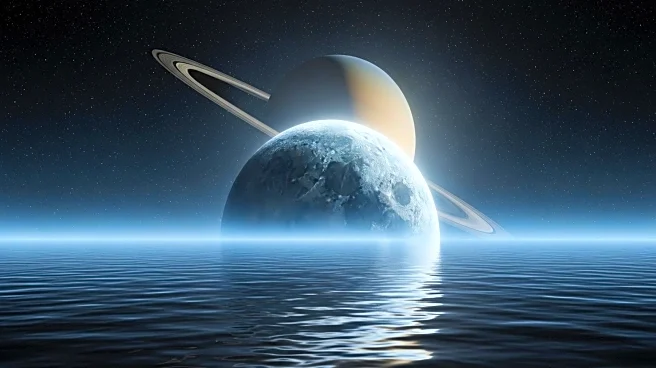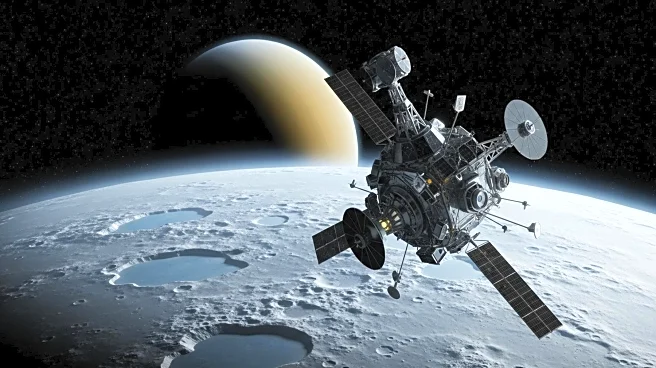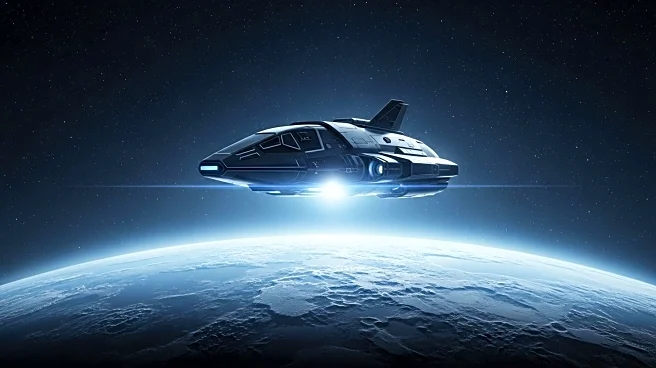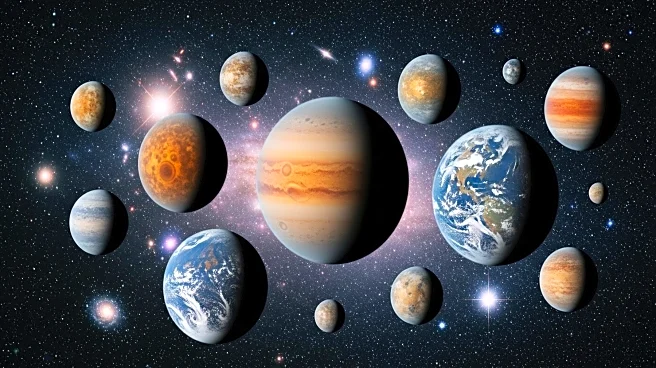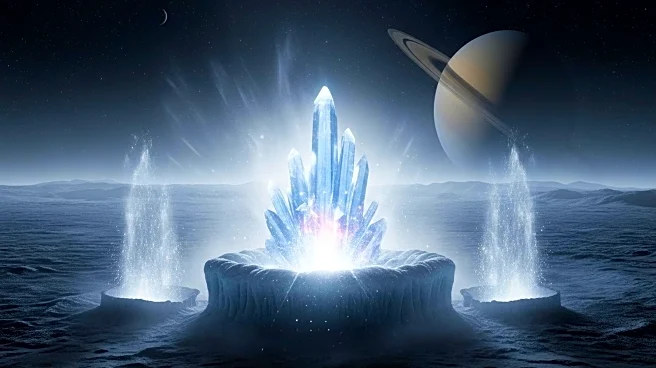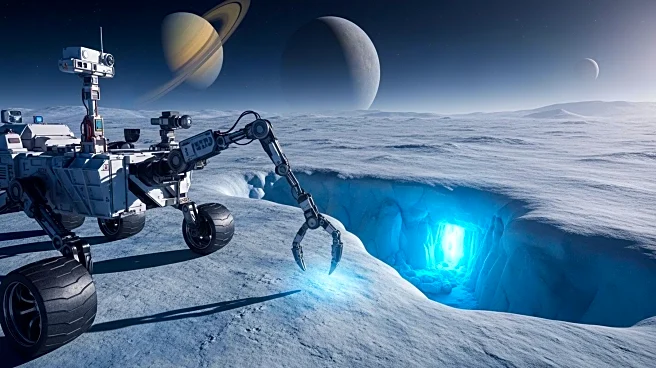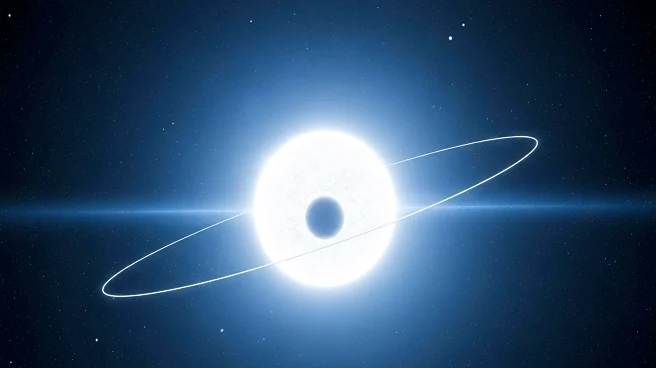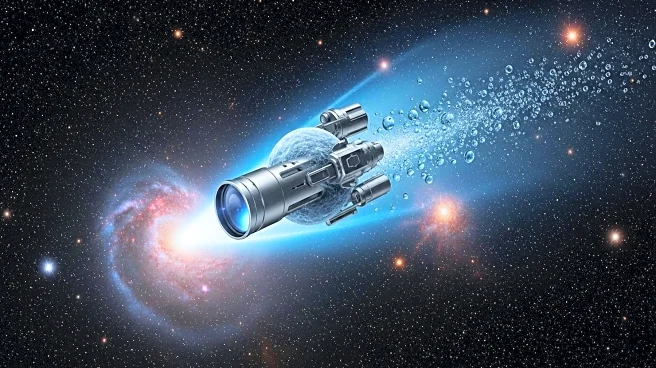What's Happening?
Recent research suggests that Saturn's moon Mimas may contain a young subsurface ocean beneath its icy exterior. Despite its heavily cratered surface, thermal and orbital models indicate the presence of liquid water beneath 12 to 19 miles of ice. Data from NASA's Cassini spacecraft initially hinted at this possibility, but new modeling strengthens the case. Changes in Mimas' orbit likely generated internal heat through gravitational tides, melting parts of the icy shell within the last 10 to 15 million years. This discovery challenges previous assumptions about Mimas being frozen solid and could redefine how scientists classify ocean worlds in the solar system.
Why It's Important?
The potential discovery of a subsurface ocean on Mimas is significant for planetary science, as it expands the understanding of ocean worlds beyond Earth. This finding could reshape theories about the conditions necessary for liquid water and the potential for life in the solar system. It highlights the importance of gravitational interactions in generating internal heat, which may be a common mechanism for creating habitable environments on other celestial bodies. The research also underscores the need for further exploration of moons and planets that may harbor hidden oceans.
What's Next?
Future missions may focus on detecting the hidden ocean on Mimas with advanced orbiters capable of penetrating its icy surface. Researchers will continue to analyze Mimas' geological history, including the formation of Herschel Crater, to better understand the moon's evolution. These studies could lead to new insights into the dynamics of icy moons and their potential for supporting life. The scientific community is likely to prioritize missions that explore similar moons and planets, seeking to uncover more hidden oceans in the solar system.
Beyond the Headlines
The discovery of a subsurface ocean on Mimas could have broader implications for the search for extraterrestrial life. It suggests that life-supporting environments may exist in unexpected places, prompting a reevaluation of the criteria used to identify habitable worlds. Additionally, understanding the processes that lead to the formation of subsurface oceans could inform the development of technologies for exploring and potentially colonizing other celestial bodies.
